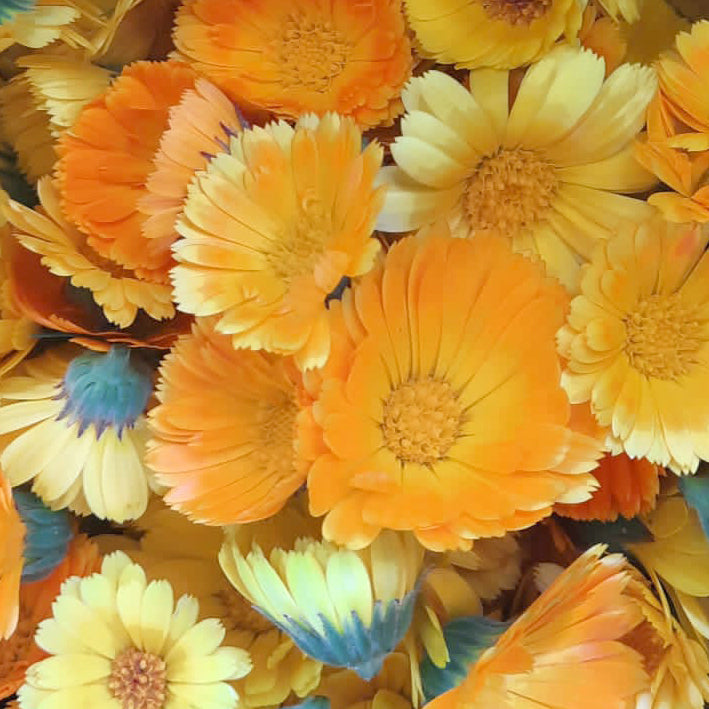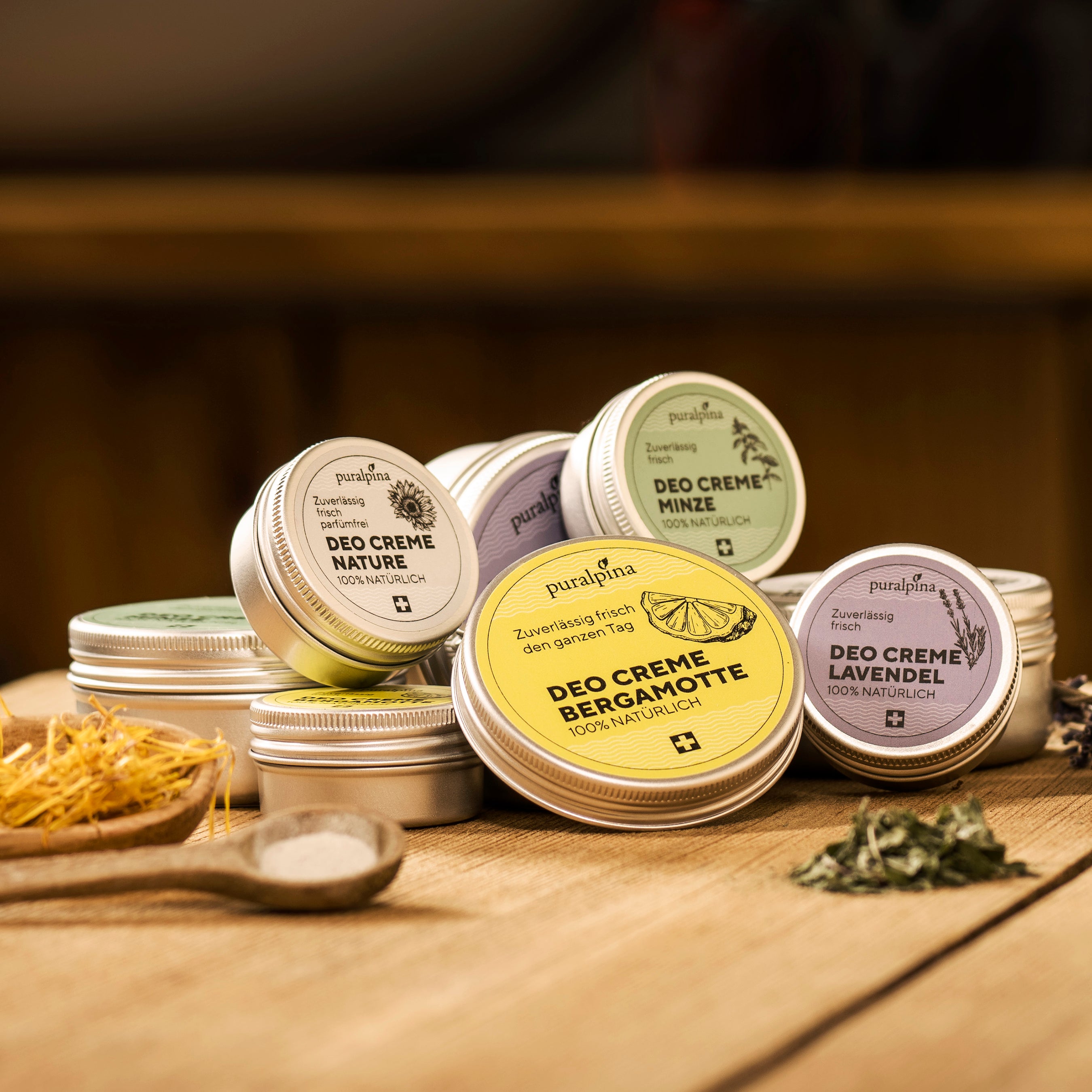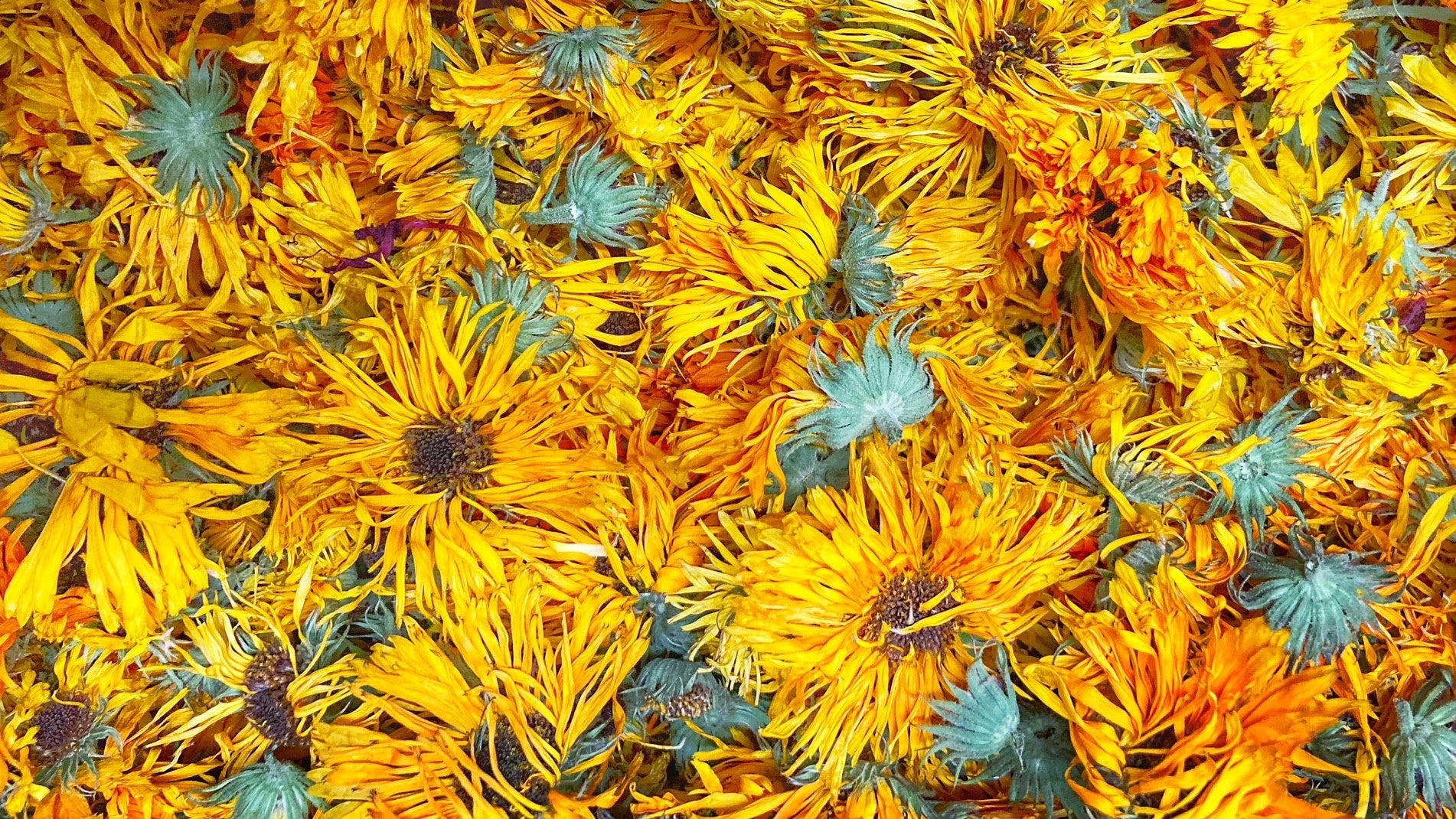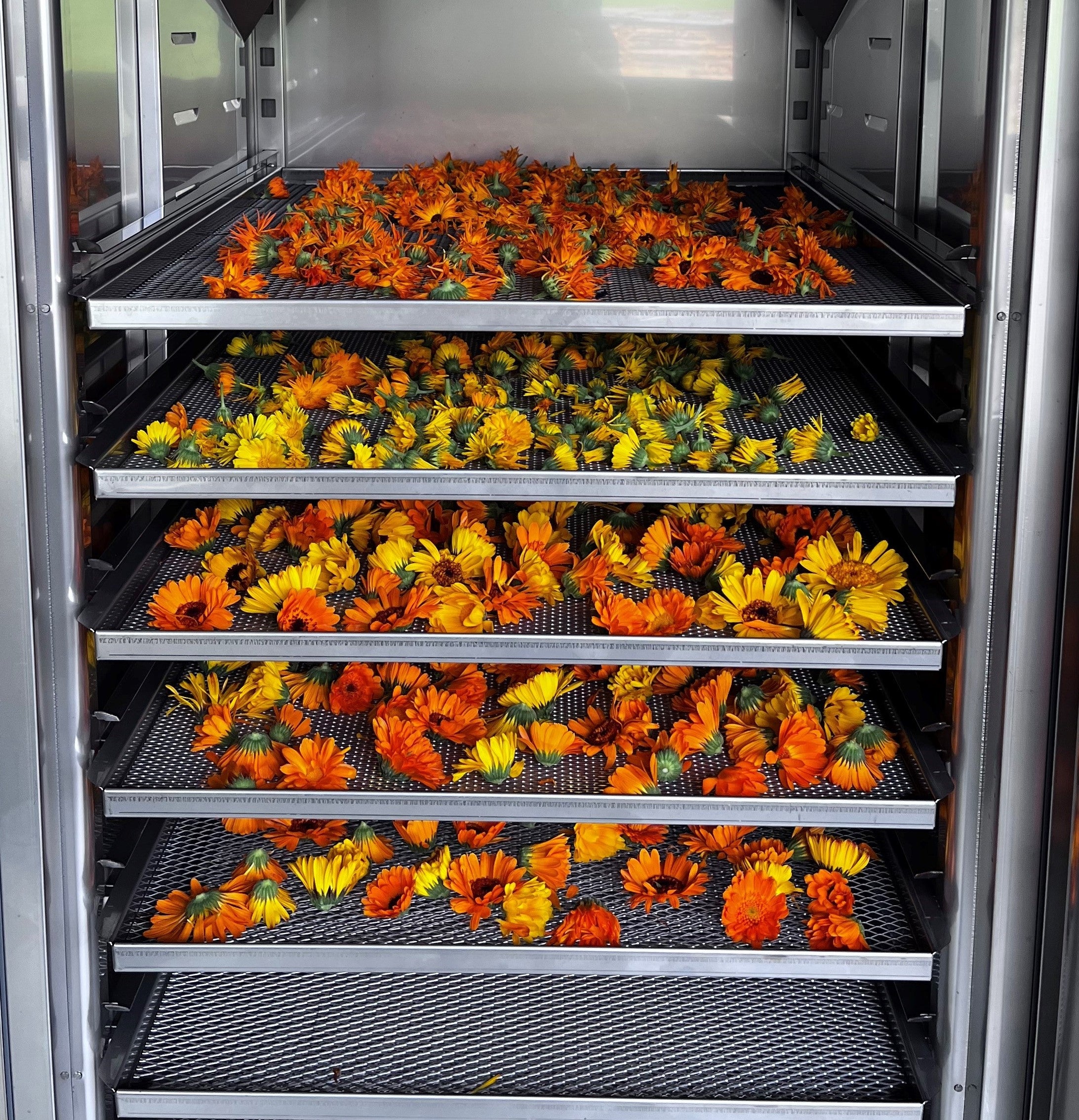The beautiful flowers of the
Marigolds
The marigold is very popular with its bright orange or yellow flowers. The delicate flowers are not only aesthetically pleasing, but also have amazing properties. The marigold is therefore highly valued both in natural medicine and in the production of natural cosmetics. We grow our own marigolds.
In this blog we tell you everything, from harvesting to processing.

Calendula officinalis
The botanical name of the marigold flower is Calendula officinalis. The marigold delights us with its bright orange and yellow tones in the gardens.
With its beautiful appearance and unique properties, it is one of the most popular garden and cultivated plants.
The marigold belongs to the daisy family (Asteraceae), which also includes arnica and coneflower. The flower head has a diameter of up to 5 cm.
The marigold is not only used as a natural remedy and in skin care , but is also used in the preparation of tea as an ornamental drug.
Do you know what a decorative drug is? Decorative drugs are dried herbs and flowers that are used as fillers in tea mixtures to give them a beautiful appearance. Flowers such as marigold flowers are often chosen for this purpose.
Characteristics
The marigold is a valuable medicinal plant for wounds and should be in every medicine cabinet. Thanks to its valuable ingredients such as saponins, triterpenes and flavonoids, it is a good remedy for external use for skin irritations, wound healing, bruises, boils and rashes. The marigold soothes irritated skin and supports its regeneration, for example after shaving. It is often used in the form of extracts, tinctures, extracts and ointments.
From cultivation to processing
Cultivation
The marigold is a frugal flower. It does not have any special requirements when it comes to its location. It thrives best in well-nourished clay soil.
When producing our Alpine natural cosmetics, we rely on marigolds that we grow ourselves and local suppliers. This guarantees that no harmful pesticides are used and that transport routes are short. This allows us to guarantee the quality and sustainability of our products.
harvest
The marigold flowers follow the sun throughout the day, similar to sunflowers. When it is wet and humid, the flowers close. Therefore, the ideal time to harvest is on a sunny day, preferably around midday, when the flowers are fully open and dry. After harvesting, we carefully check the flowers and sort out any damaged heads.


Drying & Storage
Now the freshly picked marigold flowers go into our drying cabinet. Drawers with grids ensure good air circulation. The flowers rest and dry at a constant temperature of 35-38 degrees over a period of two days. During this time, the moisture is removed from the plants. This preserves the valuable ingredients and the beautiful color of the flowers and can later develop their full effect in our Alpine natural cosmetics.
We store the dried marigold flowers in our cold storage room until they are processed further. There is also a constant temperature there, and it is dry and dark.
Calendula oil
Manufacturing
We make our own marigold oil from the dried flowers. The basis for this is Swiss organic sunflower oil, which is rich in vitamin E. This natural vitamin strengthens the skin barrier and preserves naturally. To make the marigold extract, the roughly chopped flowers are bathed in oil at 70 degrees for at least two hours. The marigold oil is filtered several times to ensure that the extract is free of flower residues. Bottled in a dark glass, it is now ready for processing.
We compost the remaining marigold flowers.
processing
And what comes next? The marigold oil is now ready for further processing in our factory. Marigold oil is an important ingredient in our deodorant cream. Together with baking soda, beeswax, wool fat (lanolin), organic corn starch, zinc oxide, healing clay and natural essential oil, our four deodorant creams are created.

Handcraft in the Bernese Oberland
We develop, mix, stir and fill - despite modern facilities, we rely on manual work.
In addition to marigold oil, we also produce other extracts from ingredients we have grown and collected ourselves. For example, edelweiss, mountain houseleek and mallow. We use these first-class essences exclusively in our own natural products.



